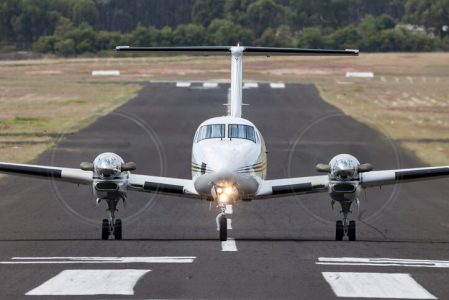More Realistic Pilot Training for Circling Approaches Could Help Lower Accidents
As professional pilots, our number one priority is passenger safety – both during takeoff and landing. To ensure that passengers are safe on both the ground and in the air, the National Transportation Safety Board (NTSB) recently issued a recommendation to airlines calling for more realistic pilot training when it comes to circling approaches. This increased focus on realistic pilot training not only serves as an important reminder of proper procedures during non-straight-in landings, but also points out areas of improvement that can help reduce possible personal injury or disruption of service due to rolling out errors or other untimely disasters.
The safety alert “Circling Approaches: Know the Risks” was released concurrently with the NTSB’s investigation of the Challenger 605 accident in California. The alert states that since 2008, there have been 10 Part 91 and 135 accidents that have occurred during circling approaches. These accidents resulted in 17 fatalities.
The risks associated with circling approaches increase when maneuvering at low altitudes and airspeeds. This often leads to unstable approaches, which further compounds the danger as the aircraft nears the ground. Research conducted by the Flight Safety Foundation has determined that runway-aligned approaches are 25 times safer compared to non-straight approaches, demonstrating their significant impact.
To increase the odds in our favor, it is crucial to be aware of our personal limitations. Regardless of being an experienced pilot, it is important to consider factors such as aircraft familiarity and weather conditions. Thoroughly briefing the approach and having an escape plan prepared are also essential. It is worth noting that the missed approach procedure serves as our ultimate escape plan, and we must not hesitate to execute it when necessary. Properly briefing and timely executing the missed approach can be crucial in difficult situations.
The other thing we can do is to not accept the approach. The Challenger pilots briefed the straight-in for the long runway but were then given an approach to a runway that was too short for their aircraft. Instead of refusing the approach to the shorter runway, they accepted it and asked for the circle. Unfortunately, they never briefed the new approach or the circle and ended up overshooting and crashing while trying to correct.
Effective Circling Approach Strategies
Circling approaches can be challenging, but with the right strategies and understanding, they can be executed safely. Here’s a list of effective strategies:
- Understand the Approach Plate: Before you initiate any approach, thoroughly review the approach plate. It provides vital information such as the minimum descent altitude (MDA), runway layout, and any special instructions or notes.
- Consider Wind Direction and Speed: Always take into account the wind direction and speed. These factors will affect your aircraft’s groundspeed during the circle. A strong crosswind, for example, could push your aircraft further from the airport than anticipated.
- Maintain Circling Altitude: Until you are ready to land, maintain the circling altitude specified for the approach. Descending prematurely can lead to dangerously low altitudes.
- Keep the Airport in Sight: The whole point of a circling approach is to keep the airport in sight while maneuvering to land. If at any point you lose sight of the airport, execute a missed approach.
- Configure the Aircraft Early: To give yourself more time to focus on maneuvering and monitoring the airport’s position, configure your aircraft for landing as soon as you have completed the initial approach and are established at the MDA.
- Communicate with ATC: Keep air traffic control informed about your intentions and request any necessary assistance. Clear communication can help prevent misunderstandings that could compromise safety.
- Use Instruments: Even though a circling approach is a visual maneuver, continue to use your instruments to back up what you see outside. They can provide valuable information about your altitude, airspeed, and rate of descent.
- Plan Your Maneuver: Plan your circling maneuver so that you roll out on final with sufficient time to stabilize the aircraft before landing. Rushing the final turn to landing can lead to a destabilized situation, increasing the risk of an accident.
- Go-Around if Necessary: If at any point the approach does not look right, go around. This could be due to losing sight of the runway, ending up too high or too fast, or any other reason that makes you uncomfortable. It’s always better to take extra time for another approach than to force a bad situation.
- Practice: The key to mastering circling approaches is practice. Use a flight simulator to practice circling approaches in various wind conditions and at different airports. The more you practice, the more comfortable you will become with this complex maneuver.
The NTSB Safety Alert recommends scenario-based pilot training in realistic environments, including a thorough pilot briefing before initiating the approach. Remember, safety should always be your top priority when flying. Don’t hesitate to go-around if something doesn’t feel right. It’s always better to be safe than sorry.
RELATED CTS TRAINING










